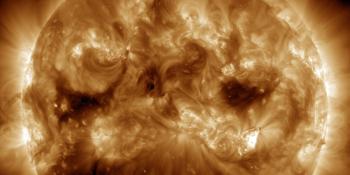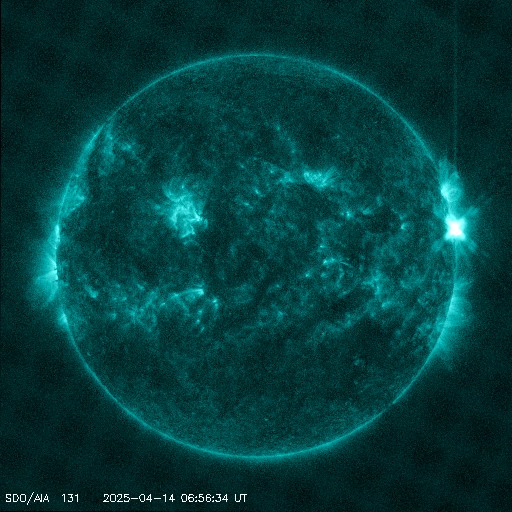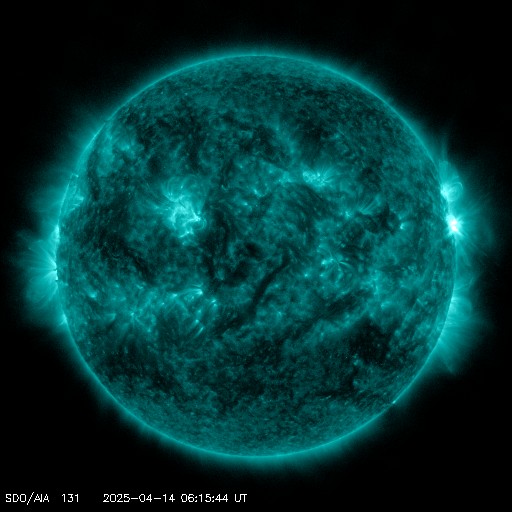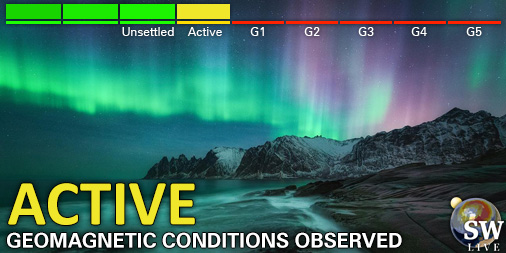Viewing archive of Friday, 1 September 2006
Solar activity report
Any mentioned solar flare in this report has a scaling factor applied by the Space Weather Prediction Center (SWPC). Because of the SWPC scaling factor, solar flares are reported as 42% smaller than for the science quality data. The scaling factor has been removed from our archived solar flare data to reflect the true physical units.
Report of Solar-Geophysical Activity 2006 Sep 01 2203 UTCPrepared by the NOAA © SWPC and processed by SpaceWeatherLive.com
Joint USAF/NOAA Report of Solar and Geophysical Activity
SDF Number 244 Issued at 2200Z on 01 Sep 2006IA. Analysis of Solar Active Regions and Activity from 31-2100Z to 01-2100Z
Solar activity increased to low levels today. Region
906 (S09W65) produced the largest flare of the period, a C1 x-ray
event that occurred at 01/0506Z. Analysis in white light indicates
that the sunspot growth rate has slowed and the region is classified
as a Dso beta group. Region 905 (S08W81) has shown steady decay
over the period and has been classified an Hax alpha sunspot group.
Updated LASCO imagery depicts a CME resulting from yesterday's B7
x-ray flare that does not appear to be Earth-directed. No new
regions were numbered today.
IB. Solar Activity Forecast
Solar activity is expected to be at
very to low levels. Region 906 has the potential to produce C-class
flares.
IIA. Geophysical Activity Summary 31-2100Z to 01-2100Z
The geomagnetic field was at quiet to unsettled levels.
IIB. Geophysical Activity Forecast
The geomagnetic field is
expected to be at predominantly quiet to unsettled levels. A chance
for active to isolated minor storm conditions are possible on 03
September due to a favorably positioned coronal hole.
III. Event Probabilities 02 Sep to 04 Sep
| Class M | 05% | 05% | 05% |
| Class X | 01% | 01% | 01% |
| Proton | 01% | 01% | 01% |
| PCAF | green | ||
IV. Penticton 10.7 cm Flux
Observed 01 Sep 077 Predicted 02 Sep-04 Sep 075/075/075 90 Day Mean 01 Sep 077
V. Geomagnetic A Indices
Observed Afr/Ap 31 Aug 006/008 Estimated Afr/Ap 01 Sep 008/010 Predicted Afr/Ap 02 Sep-04 Sep 008/010-012/020-010/012
VI. Geomagnetic Activity Probabilities 02 Sep to 04 Sep
| A. Middle Latitudes | |||
|---|---|---|---|
| Active | 15% | 25% | 20% |
| Minor storm | 05% | 10% | 05% |
| Major-severe storm | 01% | 05% | 01% |
| B. High Latitudes | |||
|---|---|---|---|
| Active | 20% | 35% | 25% |
| Minor storm | 05% | 15% | 10% |
| Major-severe storm | 01% | 10% | 05% |
All times in UTC
Current data suggests there is a slight possibility for aurora to appear at the following high latitude regions in the near future
Arkhangelsk, VorkutaLatest news
Latest forum messages
Potential AR4062 7AR 4055 97Unspecified geomagnetic activity 2254Incoming & Unnumbered Active Regions 1698AR 4060 23
More topicsSupport SpaceWeatherLive.com!
A lot of people come to SpaceWeatherLive to follow the Sun's activity or if there is aurora to be seen, but with more traffic comes higher server costs. Consider a donation if you enjoy SpaceWeatherLive so we can keep the website online!

Latest alerts
07:09 UTC - Solar flare
Moderate M4.28 flare from sunspot region 4055
06:48 UTC - Radio Blackout
Minor R1 radio blackout in progress (≥M1 - current: M1.53)
06:24 UTC - Solar flare
Moderate M1.49 flare from sunspot region 4055
06:06 UTC - Radio Blackout
Minor R1 radio blackout in progress (≥M1 - current: M1.16)
04:45 UTC - Geomagnetic activity
Active geomagnetic conditions (Kp4) Threshold Reached: 04:29 UTC
Space weather facts
| Last X-flare | 2025/03/28 | X1.1 |
| Last M-flare | 2025/04/14 | M4.2 |
| Last geomagnetic storm | 2025/04/06 | Kp5 (G1) |
| Spotless days | |
|---|---|
| Last spotless day | 2022/06/08 |
| Monthly mean Sunspot Number | |
|---|---|
| March 2025 | 134.2 -20.4 |
| April 2025 | 132.1 -2.1 |
| Last 30 days | 132.4 -10.7 |





